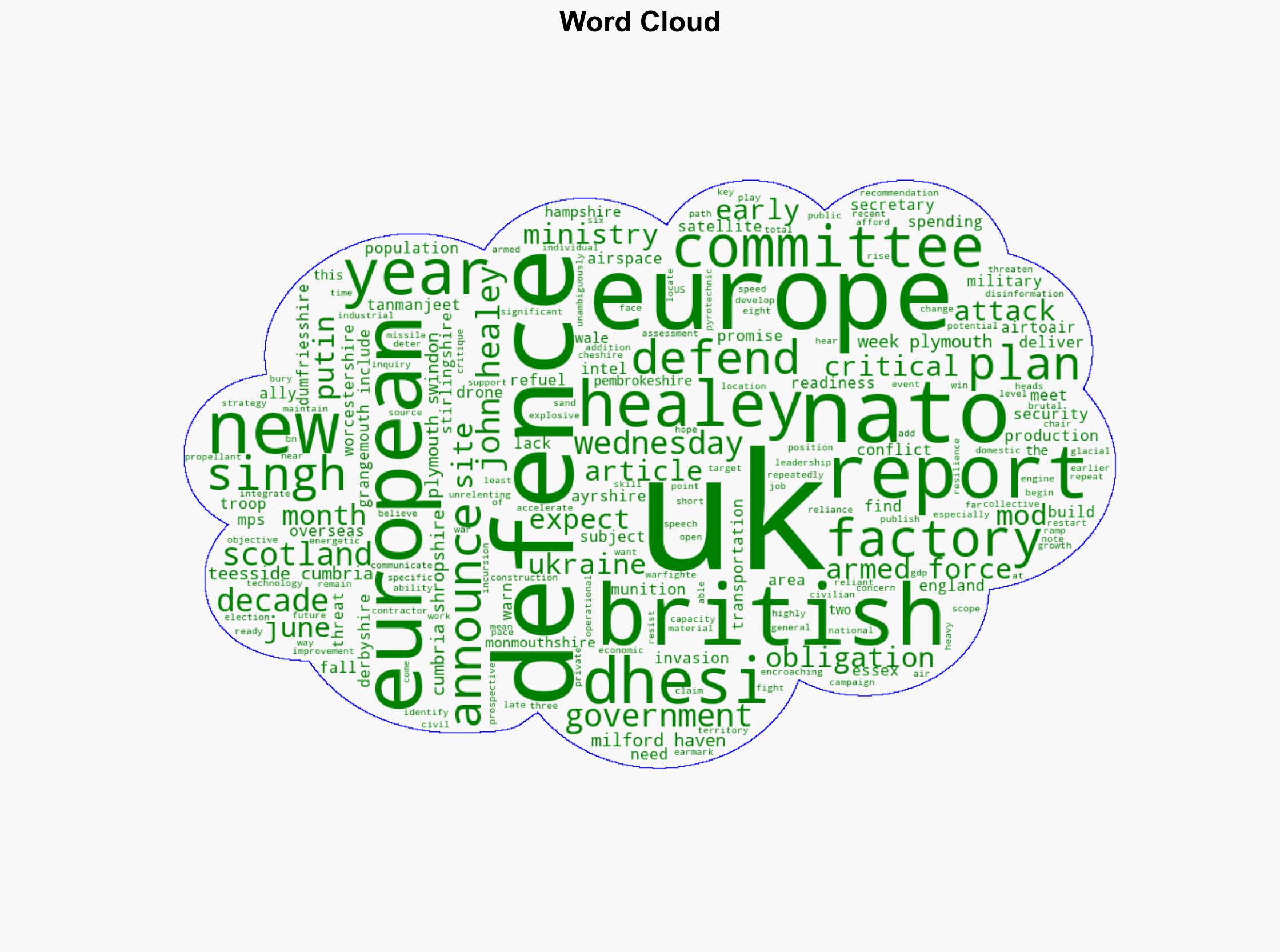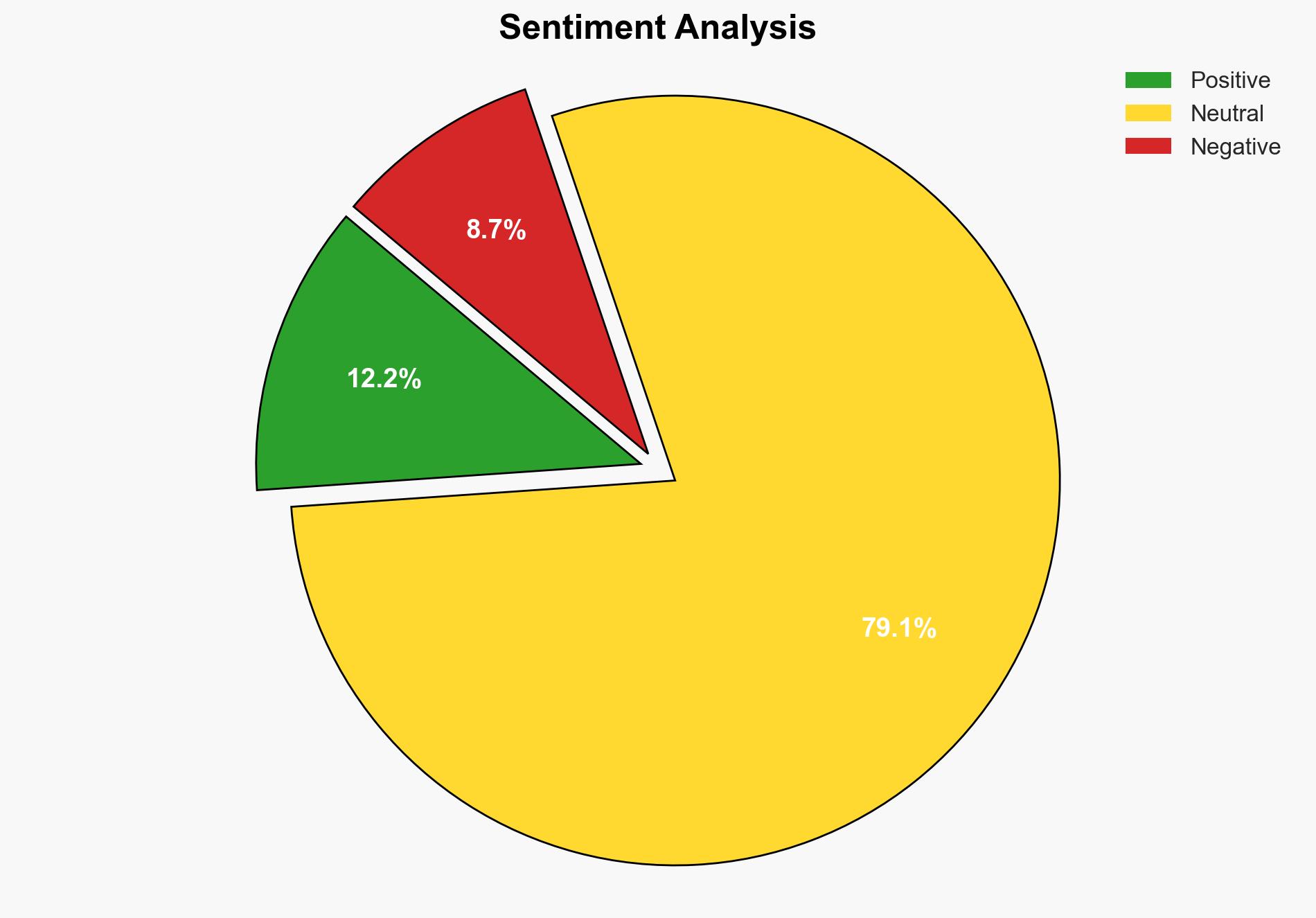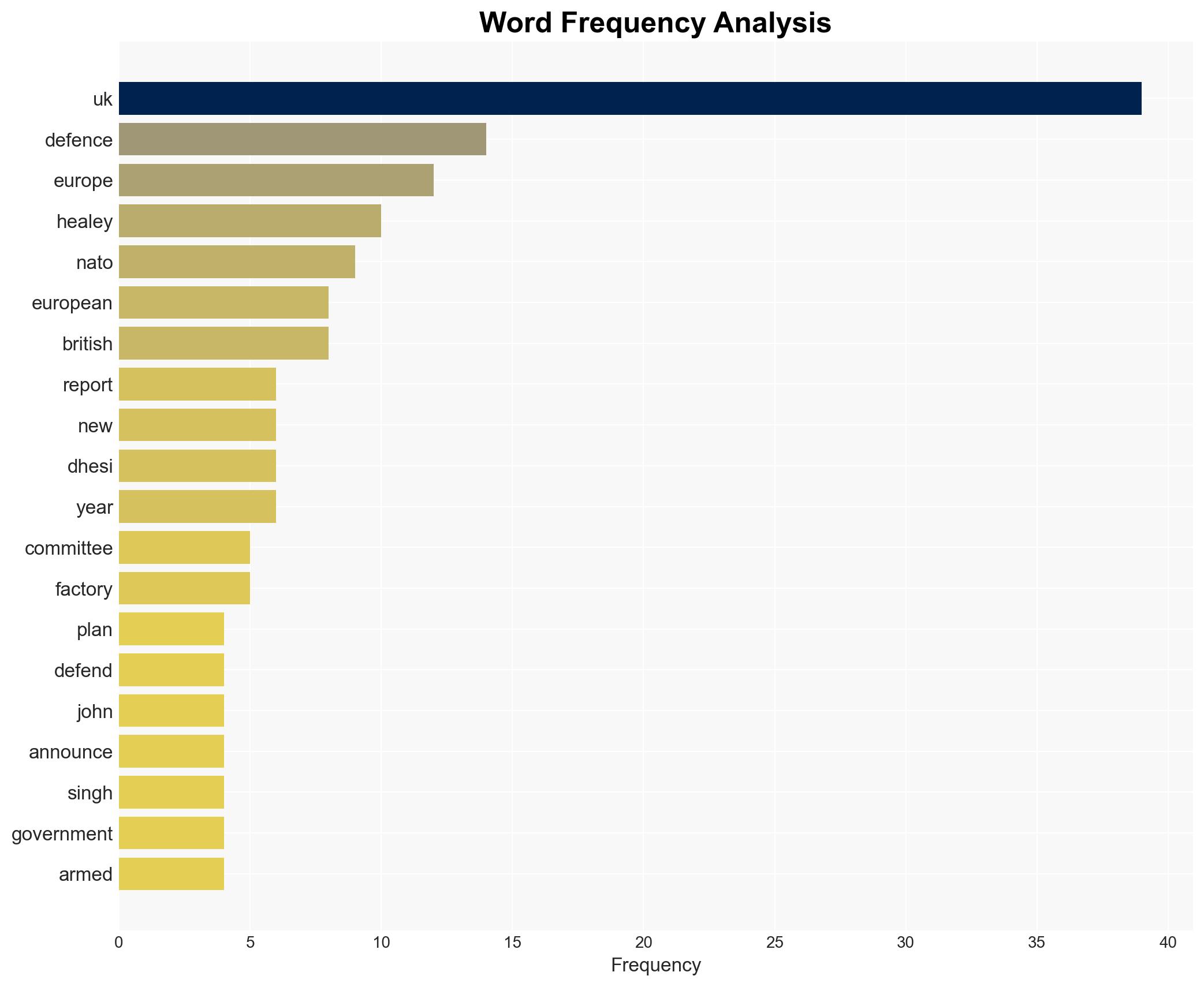UK lacks plan to defend itself from invasion MPs warn – BBC News
Published on: 2025-11-19
AI-powered OSINT brief from verified open sources. Automated NLP signal extraction with human verification. See our Methodology and Why WorldWideWatchers.
Intelligence Report:
1. BLUF (Bottom Line Up Front)
The UK faces significant strategic vulnerabilities due to a lack of comprehensive defense planning against potential invasions and military threats. The most supported hypothesis is that the UK government is underestimating the immediacy and complexity of modern military threats, leading to inadequate preparedness. Confidence Level: Moderate. Recommended action includes accelerating defense infrastructure development and enhancing public communication on national security threats.
2. Competing Hypotheses
Hypothesis 1: The UK government is underestimating the immediacy and complexity of modern military threats, leading to inadequate preparedness.
Hypothesis 2: The UK government is aware of the threats but is constrained by budgetary limitations and political considerations, delaying comprehensive defense planning.
Hypothesis 1 is more likely given the report’s emphasis on the lack of a strategic plan and the slow pace of defense improvements. The repeated warnings from the Defense Committee suggest a gap between threat perception and policy action.
3. Key Assumptions and Red Flags
Assumptions include the belief that current defense spending and planning are sufficient to meet NATO obligations. A red flag is the potential underestimation of emerging technologies and unconventional warfare tactics. Deception indicators could involve public statements that overstate readiness while internal assessments reveal deficiencies.
4. Implications and Strategic Risks
The lack of preparedness could lead to vulnerabilities in responding to hybrid warfare, cyber-attacks, and misinformation campaigns. Politically, failure to meet NATO obligations could strain alliances. Economically, inadequate defense infrastructure could deter investment in defense industries. Informationally, public confidence in national security could erode, leading to social unrest.
5. Recommendations and Outlook
- Accelerate the construction of munitions and drone factories to enhance defense capabilities.
- Increase transparency and communication with the public regarding national security threats and preparedness.
- Best-case scenario: Rapid development of defense infrastructure and increased public awareness lead to improved national security.
- Worst-case scenario: Continued delays and underinvestment result in strategic vulnerabilities and weakened alliances.
- Most-likely scenario: Incremental improvements in defense planning with ongoing challenges in meeting NATO obligations.
6. Key Individuals and Entities
Tanmanjeet Singh Dhesi, Chair of the Defense Committee; John Healey, Defence Secretary.
7. Thematic Tags
Structured Analytic Techniques Applied
- Cognitive Bias Stress Test: Expose and correct potential biases in assessments through red-teaming and structured challenge.
- Bayesian Scenario Modeling: Use probabilistic forecasting for conflict trajectories or escalation likelihood.
- Network Influence Mapping: Map relationships between state and non-state actors for impact estimation.
Explore more:
National Security Threats Briefs ·
Daily Summary ·
Support us





